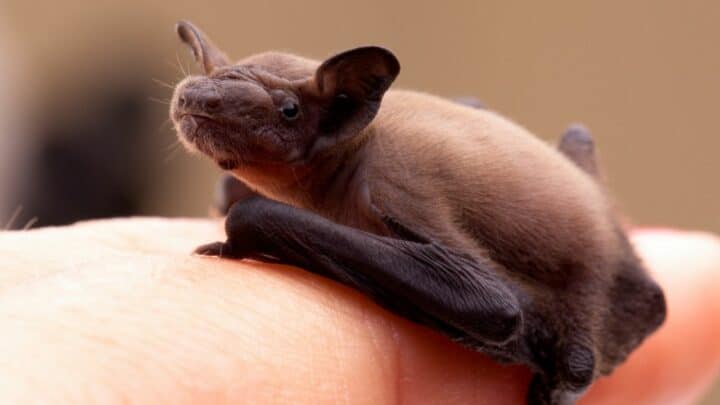Baby bats are possibly one of the cutest animals on the planet. They’re so tiny, and they don’t look all that much like bats when they’re born.
It can be notoriously tricky to spot baby bats. In fact, without the proper tracking equipment and expertise, it can be downright impossible to find bats, let alone their babies!
This leaves much of the general public wondering what do baby bats look like?
What do Baby Bats Look Like?
Baby bats are relatively small, often born with bodies no more significant than an adult thumbnail. They are born entirely hairless, and they’re typically reticent. They will develop hair on their bodies and face as they mature, and their wingspan will grow. Baby bats may look similar to baby moles or mice, especially before they learn to fly.
Learning to Recognize a Baby Bat
Homeowners and nature enthusiasts alike need to know what baby bats look like.
Not only will you be able to identify them should you find one in your home, but also if you happen to come across one on a woodland path.
Identifying the Baby Bat
Now you know where you’re most likely to find (or hear) a baby bat both out in the woods and in or around your home. Identifying the bat by use of eyesight isn’t all that difficult once you get close enough.
A baby bat on the ground will be small, sometimes no larger than your thumb. It could look like a mouse or similar rodent, and if it’s not moving, it may appear dead.
However, baby bats don’t move all that well on the ground, so proceed with caution. Baby bats are black, sometimes very dark brown, and hairless.
They chirp from time to time, and you’ll probably notice their wings tucked up underneath them, making them hard to recognize at first.
They have tiny, pointed ears, and may or may not have their eyes open, depending on age. If they’ve tried to fly from the roost, then they will likely have open eyes and maybe even a little fur!
Baby bats are adorable, but they’re not pets.
If you come across a baby bat, make sure to contact a wildlife rehabilitator right away.
Calling on a professional will ensure that the baby bat has a greater chance of survival in the wild, and you might even have them help you locate the roost, which should be a top priority if you’ve found a baby bat in your home!
Baby Bats in Nature
Bats take outstanding care of their young, and while roosting bats are relatively quiet, a roost full of adolescents is not.
If you get close enough, you’ll be able to identify them by the squeaking and chirping sounds coming out of the cave, crevice, or attic in which they’ve chosen to live.
It’s unlikely that you’ll find a baby bat too far from the roost. They are inexperienced fliers at best, and if you don’t see them on the floor of the cave itself, they won’t be too far away.
If you’re a fan of spelunking, be sure to examine the cave floor, checking for baby bats that have lost their way. You might even hear the roost, but don’t get your hopes up. Bats are difficult to track.
Baby Bats in Your Home
Most humans have a greater chance of coming in contact with a baby bat in their own home, much to their dismay.
Bats tend to roost in attics, and it’s not uncommon for baby bats to attempt to fly and fall somewhere in the home, or worse, into a wall void.
If you hear fluttering and scratching within the walls of your house, it’s essential to recognize that a baby bat could very well be stuck and go looking for the roost.
You may notice guano or other bats in your home as well.
Frequently Asked Questions about What Baby Bats Look Like
Are baby bats friendly?
Baby bats are helpless, for the most part, so it’s crucial that you extend the utmost respect and nurturing if you happen to come across one. Pick it up gently, understand that it can bite you if need be, and call a professional to help you relocate it right away.
Are baby bats bald?
Much of the time, baby bats are bald. They grow hair as they mature, but don’t be surprised if you find a hairless one! The amount of hair they have depends on the age of the bat, much like humans!
How do I pick up a baby bat?
If you’ve used the above criteria to identify that you’ve found a baby bat, pick them up incredibly gently. Please place them in a box with a soft cloth to cling to until professional help arrives.
The Benefits of Recognizing Baby Bats
Because baby bats aren’t something we see every day, many humans don’t know how to spot one.
Knowing what they look like and where you might find one is beneficial to the bat community, as they are a fragile and necessary part of our ecosystem as a whole.
Saving one bat means saving many more, so always keep your eyes peeled for these adorable creatures!


